Now Viewing:
Agriculture

A Fair to Remember in Brooklyn
Sponsored by the Windham County Agricultural Society, the Brooklyn Fair is held annually in August to promote and preserve the area’s agricultural heritage.
Read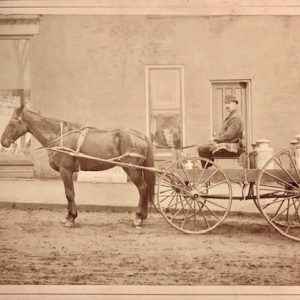
Derby’s Osbornedale Farms, Frances Kellogg, and the Dairy Industry
A family legacy developed by Frances Kellogg, Derby’s Osbornedale Farms stands out for its impact on the Holstein-Friesian breed and contributions to the dairy industry.
Read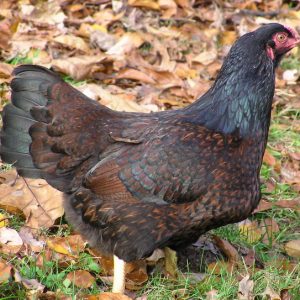
Jacques and Therese Makowsky and the Development of the Cornish Game Hen
In 1950, the Makowskys crossed a white Cornish cock with a White Plymouth Rock hen to produce a small hybrid that they patented as the Rock Cornish Game Hen.
Read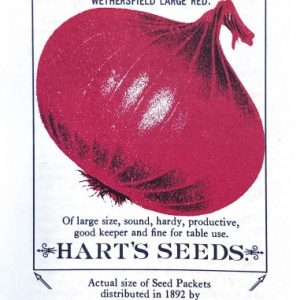
Oniontown: How Hard Work, Tall Tales, and Red Onions Built Wethersfield
Until the 19th century, the red onion trade supported Wethersfield as the first commercial town along the Connecticut River.
Read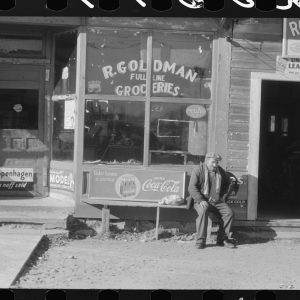
Jewish Farming Communities in Connecticut in the 19th and 20th Centuries
As Jewish immigration to Connecticut increased in the late 19th century, close-knit farming communities formed in Chesterfield and Colchester.
Read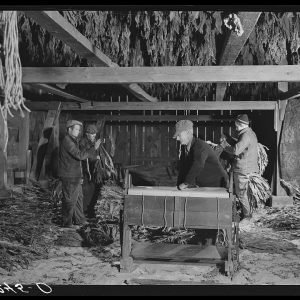
Polish Tobacco Farmers in the Connecticut River Valley
Many Polish immigrants found work on the tobacco farms in the Connecticut River Valley that specialized in the tobacco used for cigar wrappers.
Read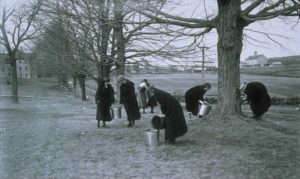
A New Source of Farm Labor Crops Up in Wartime
During times of war, in Connecticut, as in many other states, women became an increasingly important resource in food production.
Read
Food Needed to Win the War Comes from Washington
During World War I, the Town of Washington instituted a number of programs to increase food production and preservation to feed Allied armies and the European people,
Read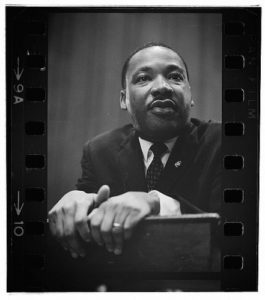
Dr. King’s Dream Had Roots in Connecticut
In the summer of 1944, a young Martin Luther King Jr. worked at the Simsbury tobacco farm of Cullman Brothers, Inc.
Read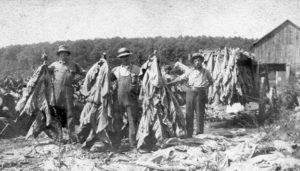
William Pinney Does It All for Ellington
A lifelong resident of Ellington, William N. Pinney served his town and his state up until his death at the age of 90.
Read
Goshen’s Animal Pound
Livestock were once a central feature and concern of daily life for Litchfield County residents.
Read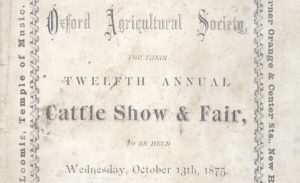
Establishing Roots in Oxford
The arrival of sawmills, gristmills, and wool manufacturing enterprises prospered in the newly incorporated town of Oxford in the early 19th century.
Read
The Windsor Economy: A River Ran Through It
Windsor’s location on the Connecticut River shaped the area’s development dating back to its earliest recorded years.
Read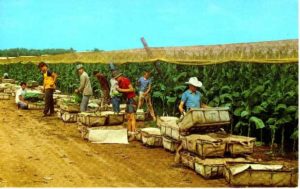
Literacy Tests and the Right To Vote
Connecticut was the first state to require a literacy test of would-be voters and, even as the practice came under fire as a tool of discrimination, the state held steady until 1970.
Read
Enfield’s Shaker Legacy
Shaking Quakers settled in Enfield and created the packaged seed business.
Read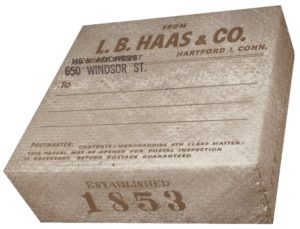
Cash Crop: L.B. Haas & Co. and the History of Tobacco in Connecticut
Louis B. Haas was a Dutch immigrant who opened a retail cigar store, Essman & Haas, on Central Row in Hartford in the late 1840s.
Read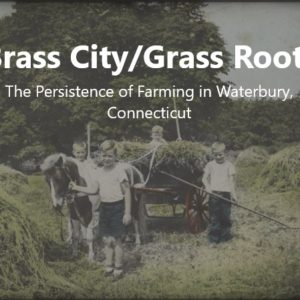
Brass City/Grass Roots: The Persistence of Farming in Waterbury, Connecticut
This article is part of the digital exhibit “Brass City/Grass Roots: The Persistence of Farming in Waterbury, Connecticut”
Read
John Howard Hale: Glastonbury’s Peach King
John Howard Hale came from a family of fruit growers in Glastonbury and developed a new type of peach that flourished in the harsh New England climate.
Read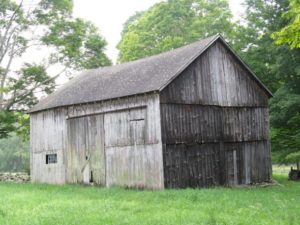
Barn Design in Connecticut
Most barns still on the Northeast landscape are New England-style barns from the 19th century and later.
Read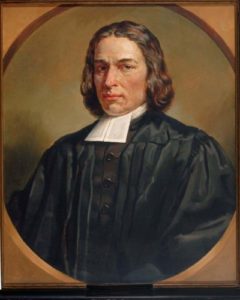
Jared Eliot Calls on Colonists to Change their Agricultural Practices
In 1760, this Killingworth minister and farmer published the first agricultural advice book in the British American colonies.
Read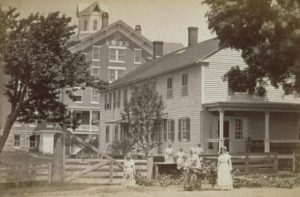
Shakers Revolutionize Garden Seed Business – Who Knew?
Enfield Shaker-grown garden seeds, one of their best and most successful endeavors, were sold throughout the US in small packages.
Read
The Lebanon Grange Followed a Different Tune than National Movement
Music played a central role in fraternal rituals and sense of community.
Read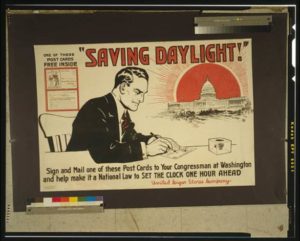
Playing with Time: The Introduction of Daylight Saving Time in Connecticut
Despite both formal and informal attempts to regulate the observance of Daylight Savings Time in Connecticut, it still remains a controversial topic for many state residents.
Read
Breaking the Myth of the Unmanaged Landscape
Evidence of early Native land use is etched into the landscape and preserved in oral tradition as well as the historical and archaeological records.
Read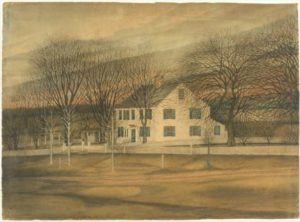
The Smith Sisters and Their Cows Strike a Blow for Equal Rights – Today in History: January 8
Abigail and Julia Smith of Glastonbury (along with Isabella Beecher Hooker) fought for a woman’s right to speak at town meetings and have a say in government.
Read
Beechmont Dairy: Bridgeport’s Ice Cream to Die For
Joseph Niedermeier Sr. founded the Beechmont Dairy in Bridgeport in 1906—a popular local business for over 60 years.
Read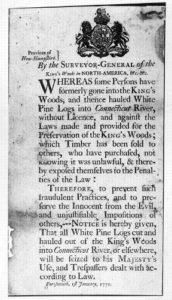
The White Pine Acts – Who Knew?
The British government made it illegal for colonials to cut down white pine trees over 24 inches in diameter—preserving the trees for use as masts on British naval ships.
Read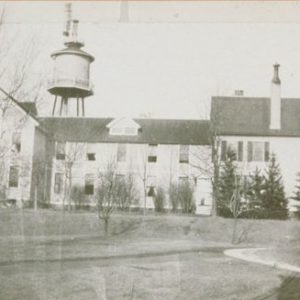
The First University of Connecticut Trustees
When the University of Connecticut started life as the Storrs Agricultural School in 1881, Governor Hobart Bigelow appointed its first eight trustees—all with agricultural backgrounds.
Read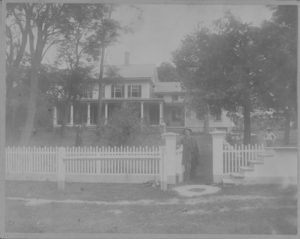
The Land of Nod Farm, East Canaan, Connecticut
The Land of Nod farm was an important agricultural and residential resource for both the people of East Canaan and the workers at the Beckley furnace.
Read
The Great Danbury State Fair & Early 20th-Century Outdoor Advertising
In 1909, the Danbury Agricultural Society called attention to its upcoming fair in a most creative manner.
Read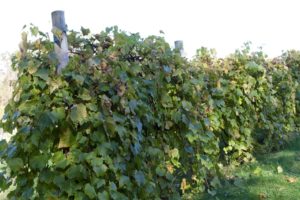
Raise a Glass to Winemaking in Connecticut
The Colony’s first settlers produced wine and spirits, but it would not be until the 1970s that Connecticut could grow and sell its harvest.
Read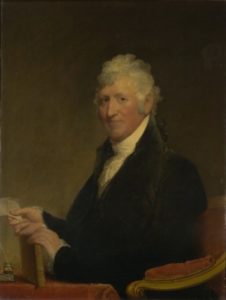
David Humphreys, Soldier, Statesman, and Agricultural Innovator
Despite an accomplished political career, this Derby-born gentleman of means is best remembered for introducing Merino sheep to North America.
Read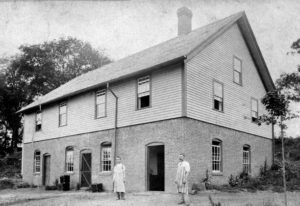
Andover’s Award-Winning Creamery
Started in 1886 by town residents, the Andover Creamery Corporation typified cooperative agricultural enterprises of the late 19th and early 20th centuries.
Read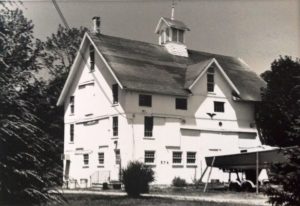
Orange Seeds Yield Corn, Alfafa, Soy, and More
The antecedents of many of today’s most widely utilized crop seeds can trace their lineage back to a company started by the Clark family in Orange, Connecticut.
Read
Brass City/Grass Roots: Waterbury Farming in the Late 1800s
This article is part of the digital exhibit “Brass City/Grass Roots: The Persistence of Farming in Waterbury, Connecticut”
Read
Brass City/Grass Roots: Farming as Recycling: The Becces in the North End
This article is part of the digital exhibit “Brass City/Grass Roots: The Persistence of Farming in Waterbury, Connecticut”
Read
Brass City/Grass Roots: From Farmers to Developers: The Rasmussens of Town Plot
This article is part of the digital exhibit “Brass City/Grass Roots: The Persistence of Farming in Waterbury, Connecticut”
Read
Brass City/Grass Roots: The Pierponts of East Farms
This article is part of the digital exhibit “Brass City/Grass Roots: The Persistence of Farming in Waterbury, Connecticut”
Read
Brass City/Grass Roots: Struggles and Decline
This article is part of the digital exhibit “Brass City/Grass Roots: The Persistence of Farming in Waterbury, Connecticut”
Read
Brass City/Grass Roots: Food Marketing and Processing as Part of Civic Culture
This article is part of the digital exhibit “Brass City/Grass Roots: The Persistence of Farming in Waterbury, Connecticut”
Read
Brass City/Grass Roots: What Makes a Farm a Farm? Other Sites of Food Production in Waterbury
This article is part of the digital exhibit “Brass City/Grass Roots: The Persistence of Farming in Waterbury, Connecticut”
Read
Brass City/Grass Roots: Remnants and Revivals
This article is part of the digital exhibit “Brass City/Grass Roots: The Persistence of Farming in Waterbury, Connecticut”
Read
Brass City/Grass Roots: Bucks Hill: Waterbury’s Rural Holdout
This article is part of the digital exhibit “Brass City/Grass Roots: The Persistence of Farming in Waterbury, Connecticut”
Read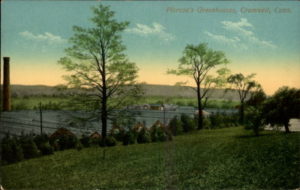
The Rose King of America Transformed Cromwell’s Landscape
Andrew N. Pierson established A.N. Pierson’s, Inc., a small floral nursery in Cromwell that evolved into the largest commercial rose growing enterprise in the country.
Read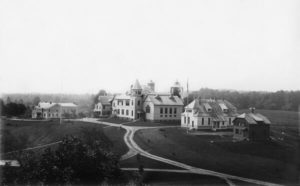
The Yale-Storrs Controversy
In the late 1800s, under pressure from frustrated farmers, the Connecticut General Assembly voted to transfer land-grant status and revenue from Yale to the Storrs Agricultural School (UConn).
Read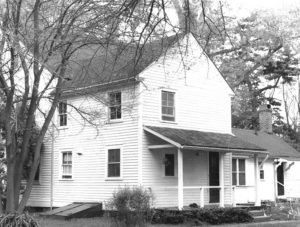
The Smith Sisters, Their Cows, and Women’s Rights in Glastonbury
By refusing to pay unfair taxes, these siblings became national symbols of discrimination suffered by women and of the struggle of the individual against government.
Read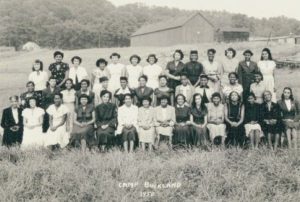
Laboring in the Shade
Thousands of Black Southern students, including a young Martin Luther King Jr., came north to work in Connecticut’s tobacco fields.
Read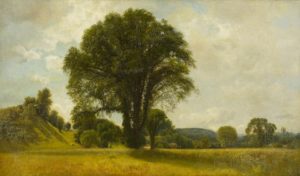
Connecticut Transforms Aaron Draper Shattuck
Drawn to the landscapes of the Farmington River Valley, artist Aaron Draper Shattuck reinvented himself as a gentleman farmer and inventor.
Read
The Danbury Fair, 1869-1981
For almost a century the Danbury Fair thrilled people from near and far. First showcased for its agricultural achievements, it later hosted a number of popular attractions including rides, races, and entertainment.
Read
Goshen Fairs Well with Agricultural Enthusiasts
In the mid-1980s, members of the Connecticut State Grange awarded Goshen the Connecticut Agricultural Fair.
Read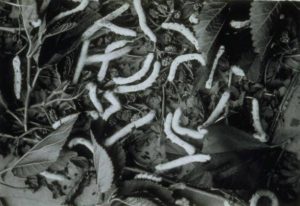
Connecticut’s Mulberry Craze
Connecticut, especially Windham and Tolland Counties, was the epicenter of US raw-silk production in the mid-19th century.
Read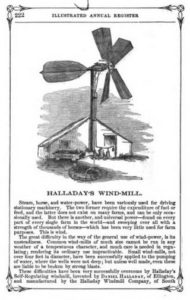
Halladay’s Revolutionary Windmill – Today in History: August 29
On August 29, 1854, Daniel Halladay a machinist, inventor, and businessman patented the first commercially viable windmill—Halladay’s Self-Governing Windmill.
Read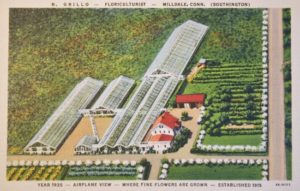
Nicholas Grillo and his Thornless Rose
Nicholas Grillo was a self-made floriculturist who earned international acclaim for developing the world’s first thornless hybrid tea rose.
Read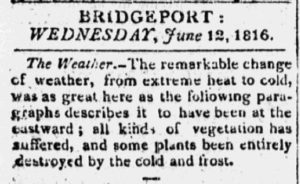
Eighteen-hundred-and-froze-to-death: 1816, The Year Without a Summer
Sunspots and volcanic eruptions led to cooler than normal temperatures in the summer of 1816.
Read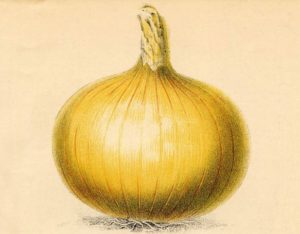
The Many Layers to Onion Farming in Westport
Westport’s fertile soil and ease of access by boat and rail once made it home to a thriving onion farming industry.
Read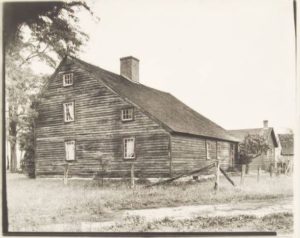
A Connecticut Home That Dates Back to the 1600s!
Dating back to the mid-17th century, the Thomas Lee House in East Lyme, Connecticut, is one of the oldest wood-frame houses in the state.
Read
The Connecticut River
The Connecticut River received a designation as an American Heritage River, and it remains protected as just one of 14 rivers in the country to be recognized as such.
Read
Windsor Tobacco: Made in the Shade
By the mid-19th century, the “Tobacco Valley,” Springfield, Massachusetts to Hartford, Connecticut had become a center for cash-crop production.
Read
North Stonington Fairs Preserve Connecticut’s Agricultural Heritage
Despite brief success as a mill town in the early 19th century, North Stonington is ultimately tied to its agricultural history.
Read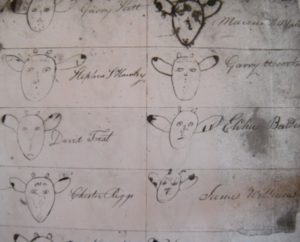
Branding Law Enacted – Today in History: February 5
In 1644, Connecticut enacted the first branding law in the colonies, calling for all livestock owners to ear-mark or brand their cattle, sheep, and swine.
Read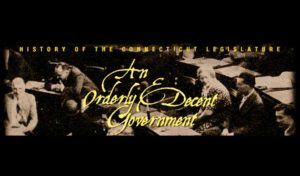
An Orderly & Decent Government: Significant Events & Developments, 1819-1865
Connecticut in the 1830s was characterized by a move from agriculture to industry, and the loss of residents to westward migration.
Read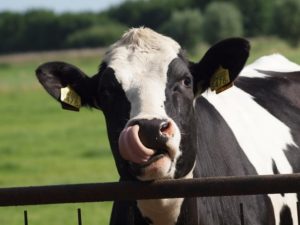
When Milk Powered Watertown’s Industry
The story of the dairy industry in Watertown mirrors that of many industries in Connecticut.
Read
Shade Grown Tobacco, Windsor 1965
Connecticut’s agricultural traditions have endured over hundreds of years, and survived through the continuing threat of manufacturing and other industries.
Read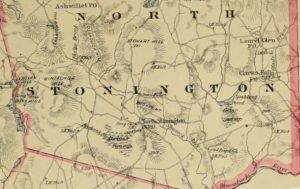
North Stonington: Shunock River and Local Ambitions Powered a 19th-century Mill Town
With water supplied by the Shunock River and Assekonk Brook, North Stonington supported mill operations and local businesses from the late 1600s to early 1900s.
ReadMore Articles




